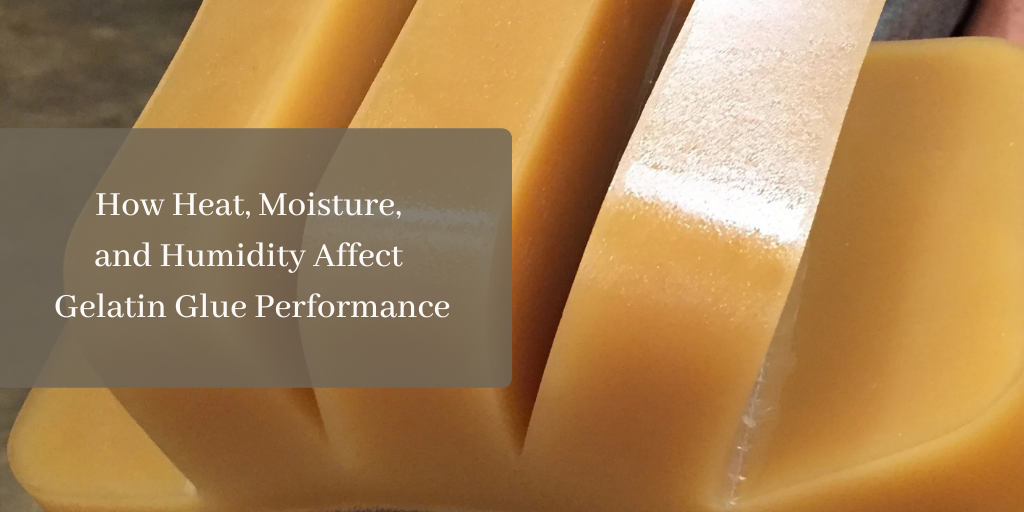When summer temperatures rise and humidity soars, your glue’s performance may start to change, sometimes subtly, sometimes significantly. At LD Davis, we often receive seasonal calls from manufacturers reporting slower set times, stringy glue, or inconsistent bonds. The culprit? Environmental factors like heat and humidity.
Understanding how these conditions affect protein-based glues—and what adjustments you can make—can help prevent production delays and maintain strong, reliable bonds in even the stickiest of seasons.
The Science Behind It: How Climate Impacts Protein Glue
Gelatin-based adhesives, also called protein glues, are water-based and composed of naturally derived materials like gelatin, sugars, and salts. Because of this composition, they’re more reactive to shifts in environmental conditions than synthetic glues. Here’s what happens:
1. Slower Set Times
Humidity in the air prevents moisture in the glue from evaporating efficiently. Since evaporation is a critical part of the drying process, excess humidity leads to slower set times and extended open times.
2. Weaker or Inconsistent Bonds
Slower drying can also cause glue to “skin” on the surface or lose tack before the substrates bond completely. In fast-moving manufacturing environments, even slight delays can cause significant issues like misaligned products or bond failure.
3. Viscosity Fluctuations
High heat may cause glue to become too thin, while excess moisture can throw off the glue’s balance—making it harder to control during application.
How to Adjust Your Process for Hot, Humid Weather
While we can’t control the weather, we can control how we adapt to it. Here are our top recommendations to improve protein glue performance during summer conditions:
Lower the Glue Temperature
Running your glue just a few degrees cooler—around 140°F instead of 150°F—can help reduce excessive flow or thinning caused by ambient heat.
Minimize Water Dilution
Adding too much water can weaken viscosity and make it harder for glue to dry in humid environments. Stick with a lower dilution ratio during the summer.
Apply a Thinner Coat
Less glue means less water to evaporate. Thinner application helps the adhesive dry faster and more consistently, even when humidity is high.
Control the Climate
If possible, use dehumidifiers or climate control to keep glue rooms below 60% relative humidity. Even simple tools like hygrometers or small dehumidifiers can make a noticeable difference.
Troubleshooting Checklist: Ask These Questions First
When troubleshooting seasonal glue issues, these are some of the first questions our technical team asks:
- What’s your current glue pot temperature?
- Are you using any new coated or synthetic materials?
- Is your production area climate-controlled or open-air?
- How thick is the glue layer (mils) being applied?
- Have your glue solids changed recently?
Thesevariables can all impact adhesive behavior. A quick audit of your process often uncovers easy fixes. If you’re still having trouble after reviewing the list, maybe additional factors are at play. Discover how gelatin glue thickness and thinness might be affecting your production and how to fix it.
Need More Help? The Experts Are Here
Summertime doesn’t have to slow down your production. With the right tweaks, you can maintain adhesive strength and consistency all year long. If you’re still experiencing issues after making adjustments, don’t worry—we’re here to help.
Our team can guide you through tailored troubleshooting, help test glue solids using a refractometer, or recommend alternative formulations like Rapid Tack or seasonal blends for better summer performance.
Want more tips? Check out our blogs on Running Glue in Hot & Humid Conditions, Summer Glue Troubleshooting Tips, and Book Binding Glue in the Summer. Reach out to us today to keep your glue and your production running smoothly all summer long.







